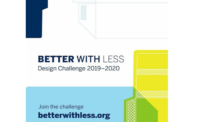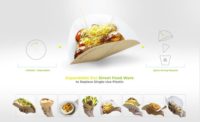Better With Less: The Jury Sounds Off on Sustainability & Innovation






The Better With Less – Design Challenge was created to find new environmentally friendly and functional packaging solutions for some of the world’s most frequently used and fastest growing types of consumer packages. Organized by Metsä Board, the European producer of premium fresh fiber paperboards, an international jury including renowned packaging design experts from various fields related to packaging, design, brand strategy and innovation was convened. After the judging concluded and the finalists chosen, a roundtable panel discussed what they saw as well as the challenges facing the packaging community when it comes to sustainability and innovation:
What are the most important elements that you were looking for when judging these entries?
Alissa Demorest: Concepts that were both simple and clever and that made substantial advances in terms of environmental impact in the finished pack.
Andrew Gibbs: Feasibility, is this a realistic concept? Could it be produced easily and at scale? Can this replace or reduce the use of single use plastic in a significant way? And, is it consumer friendly and easy to use?
Clark Goolsby: Was the idea unique? Was it actionable? I gave the highest marks for designs that could be manufactured, shipped, and shelved in real-life scenarios as well as design that meaningfully solves a sustainability problem.
Stefan Junge: Ones that combined smart and intelligent features such as perforations, windows, moving parts, creasing cuts and die-cutting that can lead to new and exciting things. It is very difficult come up with ideas that can be patented, but combining things very often leads to new experiences for consumers.
Have you been impressed and/or inspired by the submissions? If so, why or why not?
Charles Ng: The submissions were divided in 2 directions: one more creative-driven, the other more user-friendly. I was looking for a balance and integration of creativity, user experience, use of materials and production.
Andrew Gibbs: The submissions were extremely inspiring because many of them offered ingenious solutions that can actually reduce the amount of single use plastic our industry uses. It shows that the future of sustainable packaging is within reach.
Clark Goolsby: I was impressed with several of the solutions. My favorites were not only elegantly designed, but also showed a deep understanding of the critical issues surrounding packaging and its recyclability.
How can designers and brands work together more effectively to come up with solutions?
Alissa Demorest: They bth have different ways of looking at the market, but the end result is to create something that both appeals to the consumer and improves his/her experience of the product. As in any relationship, they need to communicate as efficiently as possible to reach the goal.
Stefan Junge: Very often brand owners communicate via the marketing department or with an agency, without consulting the internal packaging engineers. A joint meeting or creativity workshop would be beneficial and must include packaging specialists.
Charles Ng: Designers and brands can work together more effectively to achieve a holistic result through an overall integration of strategy, design, production, marketing and implementation.
Are consumers demanding change? If so, how is that going to impact what we see from package design?
Alissa Demorest: We say consumers are demanding change, but when you look at the marketplace it’s often not the case. It’s also the designer’s role to create something that will make consumers naturally gravitate toward more responsible solutions simply because they offer a better and more qualitative consumer experience.
Clark Goolsby: There’s a broad swath of consumers willing to pay more for brands and products that are healthier, more natural, and sustainable.
Charles Ng: Consumer demands change quickly. They buy not just for the sake of needs and functionality, but also for environmental concerns.
How do you balance sustainable design with a better consumer experience?
Andrew Gibbs: Oftentimes, in order to create a more sustainable design, designers must redesign the consumer experience itself, reimagining how products and packaging are consumed.
Charles Ng: A better consumer experience involves less materials, a smart use of printing methods and processes and, most importantly, the overall materials used should not create a negative environmental impact.
Alissa Demorest: Great design is something so obvious you wonder why it was never invented before. Making it sustainable should be an integral part of the process and not an add-on.
What role does education play with consumers when designing for sustainability?
Stefan Junge: Very important. In Germany, for example, one city created the green dot program to "educate" all citizens.
Clark Goolsby: Unfortunately, the average consumer is still woefully undereducated when it comes to sustainability and recycling. Over the last ten years, I have seen consumers habits change, while also observing real commitment from brands to improve their sustainability as well.
Alissa Demorest: Sustainable design should be a no-brainer. It should speak through its use of materials and minimalism. After that, it’s up to brands to communicate the right message.
The jury:
• Alissa Demorest, the Editor in Chief of Formes de Luxe, has an extensive experience in the luxury-goods sector from both brand and supplier perspective.
• Andrew Gibbs the Founder, CEO & Editor in Chief of The Dieline, has been called an “innovator in the world of design.”
• Charles Ng the Chief Designer & Brand Consultant of MCL Group, China, has a holistic approach on brand design, which covers creative works of graphic, product, spatial and retail.
• Clark Goolsby, the Chief Creative Officer of Chase Design Group, emphasizes the value of design, and the lasting cultural and financial impacts it has for products and organizations.
• Stefan Junge, the Professor in Packaging Technology at Beuth University of Applied Sciences, Berlin, has more than 20 years of experience in the field of packaging technology including working as Corporate Packaging Manager at Nestlé.
Jury Chairman:
• Ilkka Harju, Packaging Services Director, EMEA and APAC, Metsä Board
Click here for more information about The Better With Less – Design Challenge.
Looking for a reprint of this article?
From high-res PDFs to custom plaques, order your copy today!









